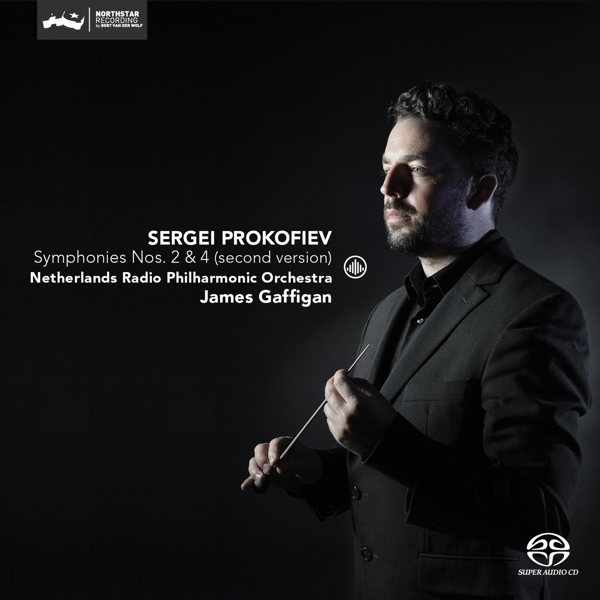Your search:
No selection
Filter results:
|
Other products from Herbert Von Karajan |
| Details / Tracklist: |
01. "Symphony No. 2, Op. 40 in D Minor"
02. "Symphony No. 2, Op. 40 in D Minor"
03. "Symphony No. 2, Op. 40 in D Minor"
04. "Symphony No. 2, Op. 40 in D Minor"
05. "Symphony No. 2, Op. 40 in D Minor"
06. "Symphony No. 2, Op. 40 in D Minor"
07. "Symphony No. 2, Op. 40 in D Minor"
08. "Symphony No. 2, Op. 40 in D Minor"
09. "Symphony No. 2, Op. 40 in D Minor"
10. "Symphony No. 4 (revised version) Op. 112 in C Major Andante - Allegro"
11. "Symphony No. 4 (revised version) Op. 112 in C Major Andante tranquillo"
12. "Symphony No. 4 (revised version) Op. 112 in C Major Moderato, quasi al"
13. "Symphony No. 4 (revised version) Op. 112 in C Major Allegro risoluto"
|
 | | Number of discs: |
1 |
 | | Extra-Infos: |
Netherlands Radio P.o./ James Gaffigan |
 | | Description: | The Dutch composer, music journalist and novelist Elmer Sch√∂nberger once described the Second Symphony as a sub-genre ‚?? of a primarily psychological nature, albeit with considerable stylistic consequences: in a first symphony, a composer will more or less reflect the traditions from which he comes, and in a second he will deliberately break away from them. Prokofiev‚??s Second, composed eight years after the First, appears to be a defiant ode to the modern era, witnessed by the layers of mechanically persistent rhythms, expressionist harmonies, ostensibly unfathomable forms and its very expansive take on tonality. The work was premiered in Paris in 1925, conducted by Serge Koussevitsky. Prokofiev decided to revise his Fourth Symphony, Op. 47, after the successful premieres of his Fifth and Sixth Symphonies (in January 1945 and December 1947 respectively). The original four movements remained largely intact, but the changes say a great deal about his style at that point. The first alteration was to insert or expand some passages that were predominantly reflective, with a strong emphasis on melody. Another example is the attempt to align the scale more closely with what was required by Social Realism, in which the neo-classical is overlaid with a considerable dose of heroism and sometimes even bombast. The association of Op. 112 with Social Realism subsequently proved to be an obstacle to its acceptance in the West. - NETHERLANDS RADIO P.O./JAMES GAFFIGANThe Dutch composer, music journalist and novelist Elmer Schonberger once described the Second Symphony as a sub-genre of a primarily psychological nature, albeit with considerable stylistic consequences: in a first symphony, a composer will more or less reflect the traditions from which he comes, and in a second he will deliberately break away from them. Prokofiev's Second, composed eight years after the First, appears to be a defiant ode to the modern era, witnessed by the layers of mechanically persistent rhythms, expressionist harmonies, ostensibly unfathomable forms and it's very expansive take on tonality. The work was premiered in Paris in 1925, conducted by Serge Koussevitsky. Prokofiev decided to revise his Fourth Symphony, Op. 47, after the successful premieres of his Fifth and Sixth Symphonies. The original four movements remained largely intact, but the changes say a great deal about his style at that point. The first alteration was to insert or expand some passages that were predominantly reflective, with a strong emphasis on melody. Another example is the attempt to align the scale more closely with what was required by Social Realism, in which the neo-classical is overlaid with a considerable dose of heroism and sometimes even bombast. The association of Op. 112 with Social Realism subsequently proved to be an obstacle to it's acceptance in the West. Once again, James Gaffigan interprets these works with incredible candor and dazzling aplomb. |  | | Manufacturer No.: |
05712323 |
 | Product Safety
Responsible Person for the EU:
Bertus Musikvertrieb
Bertus Musikvertrieb
Akeleibaan 59, 2908 KA Capelle aan den Ijssel, NL
service@bertus.com |  |
|
There are currently no product reviews.
|  |
|
|
 |
|


























